The composite pipe that perfectly combines the galvanizing process and the plastic coating technology is like a "pipeline guard" that combines firmness and durability, hygiene and safety. It is widely used in many important fields such as water supply and drainage, fire protection, and the chemical industry. It not only solves the problems of easy corrosion and scaling of traditional steel pipes but also improves the overall performance and service life of the pipeline system. Next, let us explore the mystery of the outer galvanized inner plastic coated steel pipe.
First, starting from the principle, understand the mystery of birth
The birth of the outer galvanized inner plastic coated steel pipe is a clever fusion of material science and engineering technology. It uses straight seam or seamless steel pipe as the base pipe, and completes the "transformation" with the help of the heating spraying process.
The process starts with the pretreatment of the base pipe: through sandblasting and pickling to remove impurities such as rust and oil, increase the surface roughness, and lay a good foundation for the adhesion of the coating; then the base pipe is heated to a specific temperature to prepare for the subsequent coating.
The outer surface adopts the hot-dip galvanizing process: the heated base pipe is immersed in molten zinc liquid, and the zinc and iron atoms diffuse and fuse to form a tight galvanized layer, which is like a solid armor, resisting the erosion of external oxygen, moisture, and chemical substances, rust-proof and impact-resistant.
The inner surface is treated with food-grade epoxy or polyethylene paint through electrostatic spraying (the paint particles are charged and adsorbed on the inner wall to form a dense coating) or hot-dip plastic (the base pipe is immersed in molten plastic to make the plastic tightly wrap the inner wall). It is not only resistant to corrosion by chemical substances in water, but also meets the drinking water hygiene standards to ensure water quality safety.
The final formed outer galvanized inner plastic-coated steel pipe has the high strength and high pressure resistance of steel pipes, as well as the corrosion resistance of the galvanized layer and the plastic-coated layer, becoming a "multi-faceted expert" in the pipeline field.
Second, the production process of
outer galvanized inner plastic-coated steel pipe is fully analyzed.
The production process of outer galvanized inner plastic-coated steel pipe integrates advanced technology and fine operation, and is divided into three links: preliminary treatment, key processing, and later improvement, which are closely linked.
Preliminary treatment is the foundation, just like laying the foundation for a building. First, chamfer and deburr the steel pipe, remove the sharp burrs on the port and process it into a regular chamfer to facilitate subsequent connection; then flatten the end face, use equipment to grind the two end faces to make them flat and parallel to ensure a tight connection; the key is sandblasting to remove rust, remove surface rust, oil, etc. through high-speed abrasive impact, increase roughness, enhance coating adhesion, and the surface of the steel pipe after treatment has a uniform metallic luster.
The key processing links determine the core quality. When the outer surface is hot-dip galvanized, the pretreated steel pipe is heated and immersed in molten zinc liquid. The zinc and iron atoms react to form a zinc-iron alloy layer and a pure zinc layer. The former has strong adhesion and strong corrosion resistance, and the latter provides further protection. The temperature and immersion time must be strictly controlled to ensure a uniform galvanized layer. The inner surface plastic coating is divided into electrostatic spraying and hot dip plastic coating: electrostatic spraying preheats the steel pipe first, so that the coating particles are charged and evenly adsorbed on the inner wall under the action of the electric field force. Thermosetting coatings also need to be cured, and the temperature and time are controlled to prevent the coating from aging or incomplete curing; Hot dip plastic coating immerses the preheated steel pipe into molten plastic to form a thicker plastic coating layer, which is suitable for scenes with high protection requirements. The dipping parameters need to be controlled to ensure uniform coating.
Later improvements ensure the final quality. Minor defects such as coating scratches and galvanized layer damage are repaired. The scratched parts of the coating are cleaned and polished and then repaired with matching paint. The damaged parts of the galvanized layer are treated with a repair agent; at the same time, comprehensive quality inspections are carried out, including appearance, coating thickness, adhesion, pressure resistance, etc., and qualified products can be put on the market.
Third, the unique performance of the outer galvanized inner plastic coated steel pipe
(I) Super strong anti-corrosion ability: The outer galvanized inner plastic coated steel pipe achieves excellent anti-corrosion by relying on a double anti-corrosion structure. The outer hot-dip galvanized layer forms a dense zinc oxide film that blocks oxygen and moisture. The thickness is tens of microns, which can protect the steel pipe in a humid and high-salt environment, such as resisting sea breeze and salt erosion in coastal projects. The inner layer uses food-grade epoxy or polyethylene coating, which has good chemical stability and water resistance, can resist corrosion from chemicals in the water, and does not pollute the water quality. Double protection extends the life of the steel pipe.
(ii) Excellent mechanical strength: The zinc-iron alloy layer formed by hot-dip galvanizing is harder than the steel pipe matrix, which improves the surface hardness and enhances the ability to resist external impact. The inner and outer coatings are tightly combined with the steel pipe to synergistically enhance the overall stiffness and pressure-bearing capacity. The inner plastic coating disperses the pressure, and the outer galvanized layer provides external support. The pressure bearing can reach 1.6MPa-4.5MPa or more, which is suitable for firefighting, industrial high-pressure transportation, and other scenes.
(iii) Long service life: Thanks to its anti-aging, wear resistance, and impact resistance, its service life exceeds 50 years. The outer galvanized layer and the inner plastic coating layer have good stability and are resistant to ultraviolet rays and temperature changes; the inner plastic coating layer is smooth and has a certain hardness and toughness, reducing friction and wear; the outer galvanized layer and the inner plastic coating layer can absorb and buffer impact, ensure the integrity of the pipeline structure, and reduce the cost of replacement and maintenance.
(IV) Convenient installation characteristics: light weight, reducing the labor intensity of handling and installation, and reducing dependence on lifting equipment; fewer joints, simple and reliable connection methods, reducing sealing processing work, and shortening construction time; good adhesion of the inner and outer coatings, stable sealing of the connection parts, and not easy to fall off and loosen under the influence of temperature and pressure, ensuring the safe operation of the system, shortening the construction period and reducing costs.
Fourth, the wide application field of the outer galvanized inner plastic coating steel pipe
(I) Domestic water supply and drainage field: As the "guardian" of residents' water safety, its inner food-grade coating meets the hygiene standards, does not release harmful substances, and ensures the purity of water quality. Whether it is laid in a new community or renovated in an old community, it can play a role, not only ensuring the hygiene of water supply, but also reducing maintenance and replacement due to its anti-corrosion, reducing costs, and resisting erosion in the water, keeping the inner wall smooth, ensuring smooth water flow and stable pressure.
(II) Firefighting: Shouldering the important task of safeguarding safety, the steel pipe matrix provides strong support and can withstand the high-pressure impact of fire water. The outer galvanized layer and the inner plastic coating work together to have excellent corrosion resistance and stable performance in humid and high-temperature environments. It is widely used in large commercial complexes, high-rise buildings, and other crowded places to ensure the smooth transportation of firefighting water in case of fire and provide a guarantee for rescue.
(III) Chemical industry: can cope with the test of corrosive media and acid and alkali liquid transportation. The inner plastic coating layer uses special corrosion-resistant plastics, which can resist strong acids and alkalis. For example, the pipeline of the sulfuric acid plant relies on it to resist strong corrosion. The steel pipe matrix and the outer galvanized layer enhance the mechanical strength, can withstand pressure fluctuations and mechanical vibrations, and ensure continuous and stable chemical production.
(IV) Oil and gas transportation: pressure bearing and corrosion resistance are the key to safe operation. The high-strength matrix and tight coating make it resistant to high pressure and ensure smooth transportation of oil and gas. Double protection can block corrosive substances such as hydrogen sulfide and carbon dioxide in oil and gas, extend the life of pipelines, and is widely used in long-distance transportation, reducing leakage, maintenance costs, and improving efficiency.
(V) Power industry: It plays a big role in protecting high-voltage cables and distribution lines. The outer galvanized layer resists natural erosion such as ultraviolet rays and rainwater to prevent rust; the inner plastic coating layer provides a smooth insulation space to reduce cable friction damage and prevent leakage. Protect urban distribution lines from the influence of groundwater level and soil pH to ensure normal power distribution.
Fifth, market price and purchase points
(I) Overview of price range: The price of outer galvanized inner plastic coated steel pipes is affected by factors such as specifications, materials, manufacturers, supply, and demand, and fluctuates greatly. DN25 specifications are about 20-50 yuan per meter, suitable for small building water supply and drainage branches; DN100 is 100-200 yuan per meter, used for medium-sized building main water supply pipelines or small fire protection systems; DN200 is 300-500 yuan per meter, commonly used in large buildings, municipal engineering, etc. Well-known brands have higher prices but guaranteed quality, small manufacturers have lower prices but may have quality risks, and changes in supply and demand, and fluctuations in raw material prices will also affect the selling price.
(II) Key factors for purchasing:
Quality control: The first consideration is that the outer galvanized layer of high-quality pipes is uniform, smooth, and defect-free, and the inner plastic coating layer is flat and intact. It is necessary to check the quality inspection report to ensure that the coating thickness, adhesion, pressure resistance, etc. meet national standards.
Specification adaptation: Select specifications according to actual scenarios. When determining the pipe diameter, you need to consider flow rate, pressure loss, etc. Different pressure levels have different requirements for wall thickness. High-pressure systems should choose a thicker wall thickness.
Manufacturer reputation: Choose a reputable manufacturer. You can learn about its reputation through the Internet and industry insiders, check its production qualifications, experience, customer reviews, and quality certification, etc. The products of such manufacturers are more stable.
After-sales service: Perfect after-sales service is very important. You need to understand whether installation guidance, technical support and maintenance, and replacement services during the warranty period are provided to reduce worries after use.
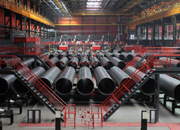 Threeway Steel is known as a professional supplier engaged in manufacturing and distributing a wide range of steel pipe, and our headquarter located the central part of China – Hunan and six associated factories throughout China.
Threeway Steel is known as a professional supplier engaged in manufacturing and distributing a wide range of steel pipe, and our headquarter located the central part of China – Hunan and six associated factories throughout China.
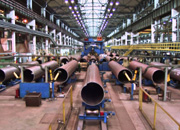 Threeway Steel is known as a professional supplier engaged in designing, manufacturing and distribution of a wide range of steel products with the headquarter located the central part of China – Hunan and six associated factories throughout China.
Threeway Steel is known as a professional supplier engaged in designing, manufacturing and distribution of a wide range of steel products with the headquarter located the central part of China – Hunan and six associated factories throughout China.
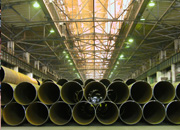 Threeway Steel is known as a professional supplier engaged in designing, manufacturing and distribution of a wide range of steel products with the headquarter located the central part of China – Hunan and six associated factories throughout China.
Threeway Steel is known as a professional supplier engaged in designing, manufacturing and distribution of a wide range of steel products with the headquarter located the central part of China – Hunan and six associated factories throughout China.
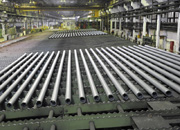 Threeway Steel is known as a professional supplier engaged in designing, manufacturing and distribution of a wide range of steel products with the headquarter located the central part of China – Hunan and six associated factories throughout China.
Threeway Steel is known as a professional supplier engaged in designing, manufacturing and distribution of a wide range of steel products with the headquarter located the central part of China – Hunan and six associated factories throughout China.
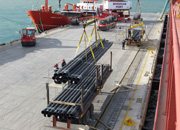 Threeway Steel is known as a professional supplier engaged in designing, manufacturing and distribution of a wide range of steel products with the headquarter located the central part of China – Hunan and six associated factories throughout China.
Threeway Steel is known as a professional supplier engaged in designing, manufacturing and distribution of a wide range of steel products with the headquarter located the central part of China – Hunan and six associated factories throughout China.

